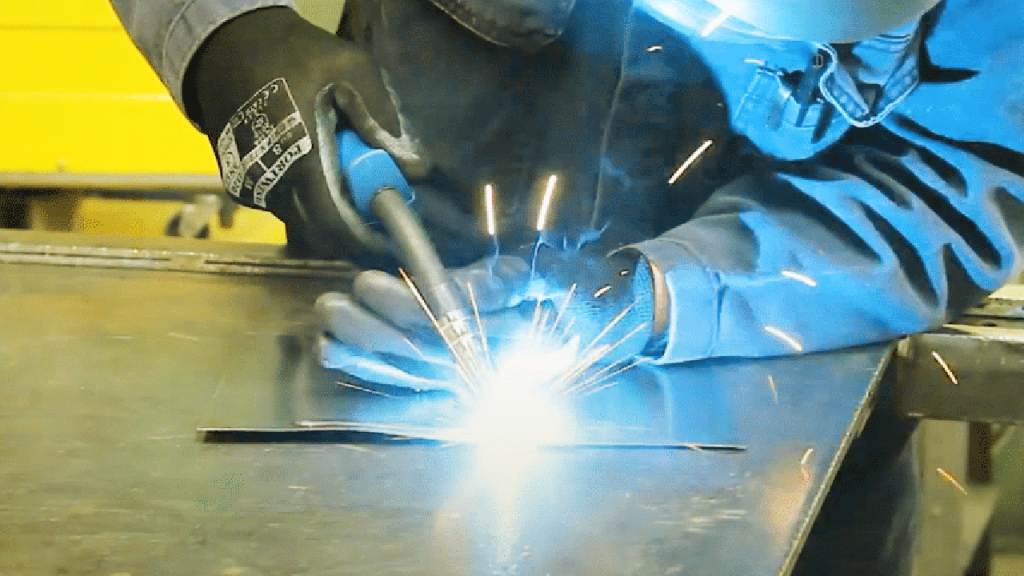When it comes to welding, one of the more challenging but rewarding tasks is joining stainless steel to mild steel. I’ve had my fair share of experiences working on projects where this type of weld was required, and let me tell you—it’s not as intimidating as it sounds once you understand the process.
If you’re a professional welder or a hobbyist, stick welding, also known as shielded metal arc welding (SMAW), is a versatile and effective method for this task.

Image by smetals.co.uk
Let’s dive into the details of how you can successfully stick weld stainless steel to mild steel, covering everything from preparation to technique, and some tips to ensure a strong, clean weld.
Why Weld Stainless Steel to Mild Steel?
You might be wondering, why would someone weld these two metals together? Stainless steel and mild steel have different properties and are often used in different applications. However, there are times when you need the durability and corrosion resistance of stainless steel combined with the affordability and strength of mild steel.
This combination is common in structural work, piping systems, and even art projects. Stick welding is a practical choice for this task because it’s cost-effective and works well in outdoor settings or with thicker materials.
Challenges of Welding Stainless Steel to Mild Steel
Before jumping into the process, it’s important to understand the challenges of welding these two metals.
Different Properties: Stainless steel has a higher chromium and nickel content, which gives it its corrosion resistance. Mild steel, on the other hand, is primarily iron with a small amount of carbon, making it more prone to rust.
Thermal Expansion: Stainless steel expands more than mild steel when heated, which can lead to stress and warping during welding.
Filler Material Selection: Choosing the right electrode is crucial for ensuring a strong bond between the metals.
Corrosion Concerns: If not done properly, the weld area can become a weak point, susceptible to corrosion over time.
Understanding these challenges will help you prepare for the task ahead and achieve better results.
Tools and Materials You’ll Need
Here’s a list of what you’ll need to stick weld stainless steel to mild steel:
- Welding Machine: A stick welder with adjustable amperage.
- Electrodes: Use a stainless steel electrode, such as E309 or E312, which is designed for dissimilar metal welding.
- Protective Gear: Welding helmet, gloves, jacket, and proper footwear.
- Angle Grinder: For cleaning and preparing the metal surfaces.
- Clamps: To secure the workpieces in place.
- Wire Brush: For cleaning the weld after completion.
Preparing for the Weld
Preparation is a key step in welding. Skipping this part can lead to weak joints or weld defects. Here’s how to get started:
Clean the Metal Surfaces
Both stainless steel and mild steel must be free of rust, oil, dirt, and other contaminants. Use an angle grinder or sandpaper to clean the areas where you’ll be welding. A wire brush can help remove fine debris.
Align and Secure the Metals
Proper alignment is crucial for a strong weld. Use clamps to hold the pieces in place and ensure they don’t move during welding.
Choose the Right Electrode
For welding stainless steel to mild steel, E309 and E312 electrodes are the most commonly used. These electrodes are designed to handle the differences in metal composition and create a strong bond.
| Electrode | Best Use Case |
|---|---|
| E309 | General-purpose dissimilar metal welding. |
| E312 | High-strength welds, particularly for heavy-duty applications. |
The Stick Welding Process
Now that your materials are prepped, it’s time to get to the actual welding. Here’s a step-by-step guide:
Set the Welding Machine
Adjust your welding machine to the correct amperage for your electrode. The settings will vary depending on the thickness of the materials, but as a rule of thumb:
- For thinner materials: 70–90 amps.
- For thicker materials: 100–130 amps.
Strike the Arc
Hold the electrode at a slight angle (about 10–15 degrees) to the workpiece. Strike the arc by tapping the electrode on the surface and lifting it slightly to start the weld.
Control the Heat
One of the biggest challenges in welding stainless steel to mild steel is controlling the heat. Too much heat can cause warping or burn through the mild steel, while too little heat can result in weak penetration.
Weld in Short Sections
To minimize heat distortion, weld in short sections, allowing the metal to cool slightly before continuing. This is particularly important for stainless steel, which is more sensitive to heat.
Clean as You Go
Slag builds up as you weld, especially with stick welding. Use a chipping hammer and wire brush to clean the slag between passes.
Post-Weld Cleaning and Inspection
Once you’ve completed the weld, clean the area thoroughly to remove slag and other residues. Use a wire brush or grinder for this step.
Inspect the weld for any defects, such as cracks, porosity, or incomplete fusion. A strong weld should have a uniform appearance and be free of gaps.
Tips for a Successful Weld
Here are some tips I’ve picked up over the years to help you stick weld stainless steel to mild steel effectively:
- Preheat if Necessary: For thicker materials, preheating can reduce stress and prevent cracking.
- Use a Backing Strip: If you’re welding thinner materials, a backing strip can help stabilize the weld and prevent burn-through.
- Practice on Scrap Metal: Before tackling your actual project, practice on some scrap pieces to get a feel for the process.
Common Mistakes to Avoid
Even experienced welders can make mistakes. Here are some common pitfalls to watch out for:
- Using the Wrong Electrode: Not all electrodes are suitable for dissimilar metal welding.
- Skipping Cleaning: Welding dirty metal leads to poor-quality welds and defects.
- Rushing the Process: Take your time to ensure proper alignment and heat control.
Advantages of Stick Welding Stainless Steel to Mild Steel
- Versatility: Stick welding can be used outdoors and on a variety of materials.
- Cost-Effective: Compared to other welding methods, stick welding requires less expensive equipment.
- Strong Welds: When done correctly, the welds are durable and reliable.
Conclusion
Stick welding stainless steel to mild steel is a valuable skill that opens up a world of possibilities in both professional and DIY projects. While it may seem challenging at first, understanding the process and practicing the techniques can make a big difference.
From selecting the right electrode to managing heat and cleaning the weld, every step plays a role in achieving a strong, clean joint. Once you’ve mastered this process, you’ll have the confidence to take on more complex welding tasks.
So go ahead, give it a try, and enjoy the satisfaction of creating something strong and lasting with your own hands.
FAQs
What’s the best electrode for welding stainless steel to mild steel?
E309 and E312 electrodes are ideal for this type of welding.
Can I use stick welding for thin materials?
Yes, but you’ll need to control the heat carefully to avoid burn-through.
Do I need to preheat the metal?
Preheating is recommended for thicker materials to reduce stress and prevent cracking.
Why is my weld cracking?
Cracking can occur due to improper heat control, incorrect electrode choice, or insufficient cleaning.
Can I weld stainless steel to mild steel without a special electrode?
No, a stainless steel electrode is necessary to handle the differences in metal composition.

Endow Russel the owner chief editor of giftendow.com . I am a mechanical engineer and assign to an local firm with much experience in welding and industrial equipment.

